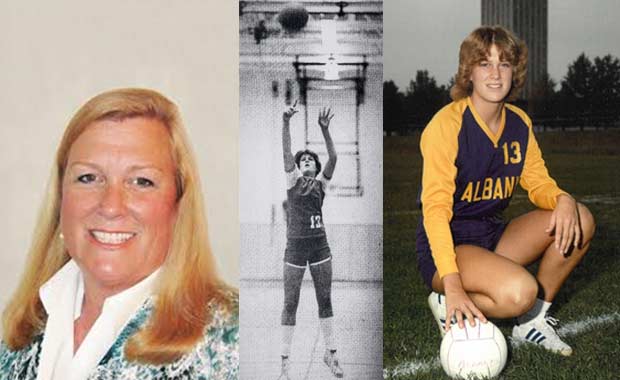![]()
![]()
In action from last season, Stockade FC’s Marco Kloster tries to maneuver through Boston City players Michael Rincon and Ronaldo Vieira. (Photo by Phyllis McCabe)
Kingston Stockade FC’s third season in the National Premier Soccer League (NPSL) is just around the corner, with the first official game taking place when the Rhode Island Reds visit Dietz Stadium on Saturday, May 12. But first, a friendly followed by a trip to Long Island for the club’s first-ever appearance in the Lamar Hunt U.S. Open Cup.
Though its connection to local soccer fans runs deep, Stockade FC is still a relatively new team, which means the “most important game in club history” can sometimes change from week to week. Such is the case with Kingston, who finished last season atop the Atlantic Conference White with an 8-5-1 record and has played at least 10 different “most important games” since their very first in 2016. But they’ve got another coming up quickly when they hit the road for the 105th edition of the annual Open Cup when they battle the Long Island Rough Riders Soccer Club of the Premier Development League (PDL) on Wednesday, May 9.
Stockade is among 52 open division teams in the Open Cup, just 19 of which are from the National Premier Soccer League (NPSL). All open division teams will play in the tournament’s opening round on the same day. Kingston earned its bid into the national tournament on the merits of their 2017 sophomore season, their first under head coach David Lindholm.
“It’s such a big game that we would love to have more preparation for it, but there’s not much we can do about it,” said Lindholm, who just this week saw the club’s 11 college players become eligible to officially join the team. “But that’s true of our opponents too. It’s the first game of the season for them as well, and it’s like playing in bad weather: Everybody’s dealing with it, and it’s about who can deal with it better.”
But before the club’s Open Cup debut, Stockade will host Newtown Pride FC of the Connecticut Soccer League (CSL) in the first annual Kingston Community Cup, which will serve as a fundraiser for gun violence-prevention non-profit Sandy Hook Promise.
“It’s a good cause,” said Stockade Club Chairman Dennis Crowley. “We thought if we’re going to do this every year, and we should, let’s put a name on it. And maybe in the future it involves more than two teams.”
Though technically an exhibition match, fans should expect a mid-season atmosphere as Kingston continues working out the kinks before the Open Cup.
“[Newtown Pride FC] have qualified for the Open Cup before,” said Crowley. “This is not a game to snooze on. These guys are really skilled. So it will be a good warmup for us with some of the college guys. This will be the first time we’re in a competitive environment [with the full squad]. And we need a pretty aggressive warmup before we get into this Open Cup match on the 9th. It kind of accidentally turned out to be really well timed.”
Interesting match in Poughkeepsie
Stockade’s first pre-season friendly saw them fall 4-3 at Marist on Friday, April 27, a surreal affair which saw Red Foxes goals scored by David Nkansah-Siriboe and Juan Parada, both of whom are part of Kingston’s 2018 roster.
The two teams traded goals until the 79th minute when Marist’s Samad Bounthong put the home side up for good off a free kick.
Kingston’s goals came from Matt Koziol, who converted a penalty kick at the 17-minute mark; and Scott Zobre, who hit the back of the net just before the half. Stockade’s other goal came 63 minutes in when the defense misplayed the ball following a Michael Creswick cross, resulting in an own goal.
Defender Jamal Lis-Simmons, one of a handful of Stockade players who has been with the club since the very beginning, said the result was less important than what it meant to the team to just get out and play.
“We can get a lot out of training sessions, but we get a whole lot out of being on the field 11-v.-11, a quality opponent,” he said. “From the team’s perspective it was good to be out on the field in a competitive environment, and I think for the coaching staff it was good to see different guys in different positions. Things are moving in the right direction. We’re all real competitive. We wanted to get the best out of each other, and David [Nkansah-Siriboe] was fortunate to get a goal. I’m sure we’ll hear about that this week in training.”
Asked if he felt encouraged by what he saw from Stockade’s Marist-affiliated players, Lindholm said it hadn’t even occurred to him.
“It’s hard for me to focus on both teams,” he said. “I was focused on our defensive miscues and some of the lack of organization we had on that side of the ball. I think I take a lot of responsibility for that because we haven’t been able to work on it too much. So I sort of missed out on that sort of optimism. But I’ll get that when those guys join us in training.”
Still, Lindholm said, after a long, cold winter, the buzz is beginning to build.
“There’s a lot to like,” he said. “We have a lot of talent on both sides of the ball, and a lot of excitement and enthusiasm about playing for the club. We have people who love being out there and love being part of the organization, and to be able to bring people into that environment is really positive for us … It’s so exciting. It’s one thing to sort of know that it’s about to happen, but you play a friendly and remember that this is a really special thing that we’re all part of and soon we’ll be in front of our fans playing games that matter a great deal to us and to them, and that’s really exciting.”
They can’t wait
Lis-Simmons said he was keen on the 2018 version of Stockade FC, which sees 17 newcomers join 22 veterans, including himself, Creswick, Zobre, Koziol, Matel Anasta, Pedro Espindola, Eric Fortier, and goalkeeper Steve Skonieczny.
“We’re going to have a deeper and more talented team this year, which I think everybody is excited about,” said Lis-Simmons. “And really, the new piece to any year is getting those new guys acclimated to the team and build that chemistry with the group. The guys are really excited. We’ve been looking forward to this opportunity for a while.”
Lis-Simmons has served as Stockade FC’s team captain since the beginning, and while no announcement has been made about the streak staying alive, Lindholm said the choice was obvious.
“I haven’t formalized it or said anything to the team about it, but Jamal really is the captain of the group no matter what,” he said. “Just the way that he carries himself and the experience that he has and the care and passion that he has for the club and what we’re trying to do makes him the captain. I don’t really have to name him the captain: He just is the captain.”
From an organizational perspective, Crowley said that aside from experience allowing them to streamline some of their operations, not much has changed. Sure, there are flashy new kits and some new sponsors as well, but what they’re mostly focusing on is building from their already solid foundation.
“First season was, ‘Hey, let’s see what happens,’” Crowley said. “Second season we won the conference championship. Even when I went and played pickup in Marbletown people were buzzing about our playing in the Open Cup. There’s a buzz around people that follow the sport, and that’s different this year. And it’ll be interesting to see if that translates into more people coming out? Does that translate into the early games having higher attendance? What’s happened is we’re slowly building attendance through the season. I expect to see the crowds grow a bit. Last year our thing was, ‘Gosh, I hope we break 1,000 fans.’ And I think the goal this year is to see if we can do 1,500 during a regular season game.”
One sponsor that hasn’t changed is Trailways, which is offering special Stockade Fan Bus trips to select away games, beginning with the Open Cup match on May 9. For more information, visit trailwaysny.com.
Whether they’re playing on the road or in the friendly — and loud — confines of Dietz Stadium, Lis-Simmons said Stockade FC is grateful to its fans.
“We feel extremely lucky as an organization to have the support that we’ve had within the community and the Hudson Valley,” he said. “So we’re going to continue to do our best to represent them and work hard for them and continue trying to put Kingston and the Hudson Valley on the map.”
All regular season Stockade FC home games take place on Saturdays, and all begin at 6 p.m. The schedule is as follows: Rhode Island Reds (May 12), New York Athletic Club (June 2), Seacoast Mariners (June 9), Elm City Express (June 16), Boston City FC (June 30). Friendlies are scheduled for Saturday, May 5 at 6 p.m., and Sunday, June 24 at 6 p.m.
Kingston’s regular season road schedule includes games at Greater Lowell (Saturday, May 19), Hartford City (Saturday, May 26), TSF FC (Wednesday, May 30), Brooklyn Italians (Saturday, June 23), and the New York Cosmos B (Saturday, July 7).







 Liz Praetorius was among the first wave of girls at Saugerties High School to have the chance to compete in three different sports: volleyball, basketball and softball. Praetorius excelled in all three, but her posthumous induction into the Saugerties Sports Hall of Fame as part of the Class of 2018 this month is about much more.
Liz Praetorius was among the first wave of girls at Saugerties High School to have the chance to compete in three different sports: volleyball, basketball and softball. Praetorius excelled in all three, but her posthumous induction into the Saugerties Sports Hall of Fame as part of the Class of 2018 this month is about much more. Praetorius continued her volleyball career at SUNY Albany, where she earned a bachelor’s degree in English with a minor in business. She later earned her master’s degree in public administration with a focus on finance at Rockefeller College at SUNY Albany.
Praetorius continued her volleyball career at SUNY Albany, where she earned a bachelor’s degree in English with a minor in business. She later earned her master’s degree in public administration with a focus on finance at Rockefeller College at SUNY Albany. “In her adult life there was a lot of coaching and giving back to students, and I think she’d be proud,” said Roger Praetorius. “And I would hope that she’d be proud of the women that are in the Hall of Fame already. I’m not saying she’s a hero. I’m saying she’d be happy that for her generation and those that followed, they had opportunities that girls didn’t before.”
“In her adult life there was a lot of coaching and giving back to students, and I think she’d be proud,” said Roger Praetorius. “And I would hope that she’d be proud of the women that are in the Hall of Fame already. I’m not saying she’s a hero. I’m saying she’d be happy that for her generation and those that followed, they had opportunities that girls didn’t before.”













